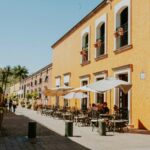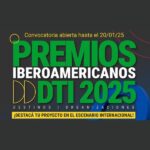
Managing Tourist Saturation vs. Imbalance in Sustainable Tourism
By Federico de Arteaga Vidiella – Tequila Inteligente Head of the project

Federico de Arteaga Vidiella – Tequila Inteligente Head of the project
The growth of tourism worldwide has brought with it a set of challenges for destination sustainability, among them the management of carrying capacity. This concept, according to the World Tourism Organization (cited in Yusoh, Mapjabil, Hanafi, & Muhammed Idris, 2021), refers to the maximum number of visitors that a destination can receive without its natural, cultural, or social resources being degraded nor visitor satisfaction being reduced. In this context, it is crucial to differentiate between saturated carrying capacity and imbalanced carrying capacity, particularly when analyzing phenomena such as “zafral” tourism — characterized by massive concentrations of travelers on specific dates, such as holidays, national celebrations, or Christmas.
Saturation occurs when tourist demand exceeds the destination’s ability to absorb visitors without significant negative effects. This situation manifests itself in the form of congestion, over-use of infrastructure, environmental damage, and conflicts with the local population (Beni, 2020). In the context of zafral tourism, saturation usually arises during peak demand periods, in which all elements of the tourism system become overloaded. For example, during the year-end holidays, beach destinations or heritage areas may experience 100% hotel occupancy, traffic collapse, and exhaustion of water resources, which puts at risk both the visitor experience quality and environmental balance.
Unlike saturation, imbalance (or poorly distributed capacity) refers to an unequal distribution of tourist flows in space and time. In this case, the total volume of visitors may be within acceptable limits, but their concentration in certain zones or periods generates localized pressure. Kostopoulou and Kyritsis (2006) emphasize that an unequal distribution of tourists within a protected area, for example, can cause serious environmental impacts in some sub-areas, while others remain under-utilized. Shi, Liu and Ye (2021) complement this view by indicating that spatial and temporal imbalance can be measured via cellular data to identify areas of excessive pressure. In the case of zafral tourism, this imbalance is evident when, during festive dates, the majority of tourists cluster in a few locations of the destination, while other areas receive no flow at all. This type of seasonal tourism, which concentrates demand in short periods of the year, generates inefficient use of the infrastructure, which remains under-utilized for much of the time and collapses during peak influx.
While saturation is related to an absolute excess of visitors relative to the destination’s capacity, imbalance refers to how those visitors are distributed in space and time. A destination may not constantly reach its maximum visitor numbers throughout the year but may nevertheless be imbalanced if it exhibits very high peaks on certain dates and minimal lows during the rest of the time, which generates impacts similar to saturation in terms of environmental and social deterioration in specific areas (Pásková, 2021). Both phenomena are closely related in zafral tourism contexts. For example, during Holy Week, a historic city may receive 70 % of its annual visitors in just one week. Although the total annual flow may not exceed the estimated maximum, the extreme concentration in such a short period represents a saturation point that evidences a structurally imbalanced tourism system.
Understanding the difference between saturation and imbalance is essential for designing appropriate management strategies. In the face of saturation, policies of load-limits, infrastructure improvement, and access regulation are required. In contrast, in the face of imbalance, the strategy must focus on redistributing flows through diversifying the tourism offer, promoting low-season visits, and decentralizing tourism spatially (Lee, 2011). The incorporation of specific indicators and monitoring technologies, such as cellular data or environmental sensors, allows a more precise understanding of tourist behavior and aids informed decision-making. Only in this way can we move toward a sustainable tourism model that minimizes negative impacts and distributes tourism benefits equitably.
Various studies have proposed integrated strategies to address these challenges. Temporal management of tourist flows through campaigns that promote visits in the off-season has proven to be an effective tool to reduce pressure during peak times (Yusoh et al., 2021). Likewise, spatial decentralization of tourism, supported by the development of infrastructure and promotion of less-visited zones, allows equitable redistribution of visitors, alleviating load on heavily frequented sites (Shi et al., 2021). Another key solution has been the implementation of differentiated capacity limits, which recognize the variability in environmental and social sensitivity of different areas of the destination (Kostopoulou & Kyritsis, 2006).
The use of monitoring technologies has gained prominence in the past decade as a response to the growing need to manage tourist flows effectively and sustainably. Tools such as big data, environmental sensors, and geolocation systems enable real-time evaluation of tourist behavior, facilitating agile and evidence-based decision-making (Shi et al., 2021). In this context, the tool “Urban Analytics” stands out, which integrates spatial, temporal, and socio-demographic data to analyze mobility patterns, anticipate saturation or imbalance scenarios, and optimize territorial planning. This technology has shown to be especially useful for visualizing complex tourism dynamics, enabling managers to identify high-pressure zones and enact preventive measures before critical thresholds are exceeded. Added to this is the need to educate both visitors and industry stakeholders on responsible and sustainable practices, with the aim of fostering a culture of respect toward natural resources, heritage, and local communities (Pásková, 2021). Finally, the development of smart tourism models and promotion of collaborative governance enable effective articulation of the various stakeholders involved, from local authorities to citizens, generating more inclusive, resilient, and context-adapted policies (Dong et al., 2022).
Tourist carrying capacity, understood not only as a physical limit but also as a planning and sustainability tool, represents a key concept in the management of contemporary destinations. The distinction between absolute saturation and a disbalanced distribution of tourist flows is fundamental to understanding the different effects that both situations generate on the environment and on visitor experience quality. The phenomenon of zafral tourism, by concentrating extreme demand in specific periods, exemplifies how a destination can experience critical levels of pressure without necessarily exceeding its annual theoretical capacity, thus revealing a structurally mismanaged system.
The response to these challenges requires an integral and adaptive approach. Strategies such as temporal and territorial diversification of the tourism offer, implementation of differentiated limits according to each area’s sensitivity, and education of visitors in sustainable practices are necessary steps, but not sufficient. The incorporation of emerging technologies, such as real-time monitoring systems and territorial-analysis tools like Urban Analytics, enables more precise, predictive, and efficient management of tourist flows, facilitating informed and preventive decision-making.
This approach applies to the case of the city of Tequila, Mexico, which implemented a smart carrying-capacity management strategy during the pandemic. Through the use of monitoring and real-time data analysis technologies, Tequila was able to face one of its most urgent problems: excess tourism, especially in its historic center. Before the pandemic, overcrowding of people and vehicles was constant, but with the new requirements of physical distancing, the effective carrying capacity was significantly reduced. With tools such as cameras, sensors, traffic-control systems, and big data, pedestrian and vehicular flows were monitored, preventive alerts generated, sanitary filters implemented, and capacities restricted in public spaces.
The maximum estimated capacity of the historic center was 2,016 persons per hour, but with healthy distancing this was reduced to 1,008 persons per hour. Despite overload estimates that ranged from 62% to 248% during weekends, the city managed to remain within the preventive limit, avoiding saturation. The measures included satellite parking lots, restrictions at boarding/alighting points, communication campaigns, de-concentration via tactical urbanism and data-based traffic decisions. Thanks to this, Tequila not only managed its carrying capacity but also advanced toward becoming a smart and sustainable tourism destination.
Tequila’s experience demonstrates that destinations are complex systems that must be “listened to.” In this sense, the concept of panarchy, proposed by Lance Holling and Buzz Gunderson, acquires relevance, since it posits that complex systems present cycles of stability and change, and that managers must be flexible and adaptive. Understanding the multiple possible equilibria of an urban ecosystem and acting accordingly is essential for effective and resilient management.















